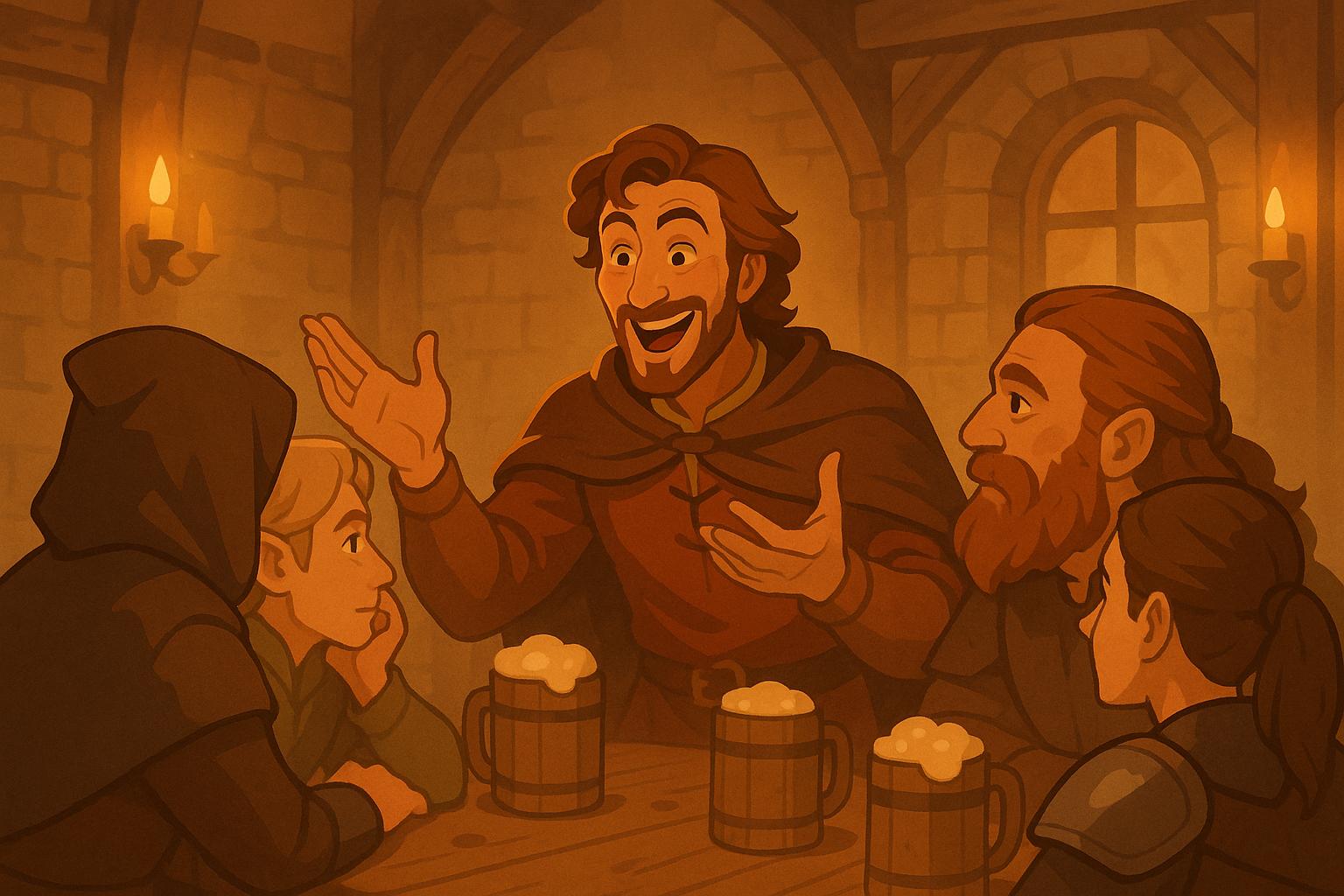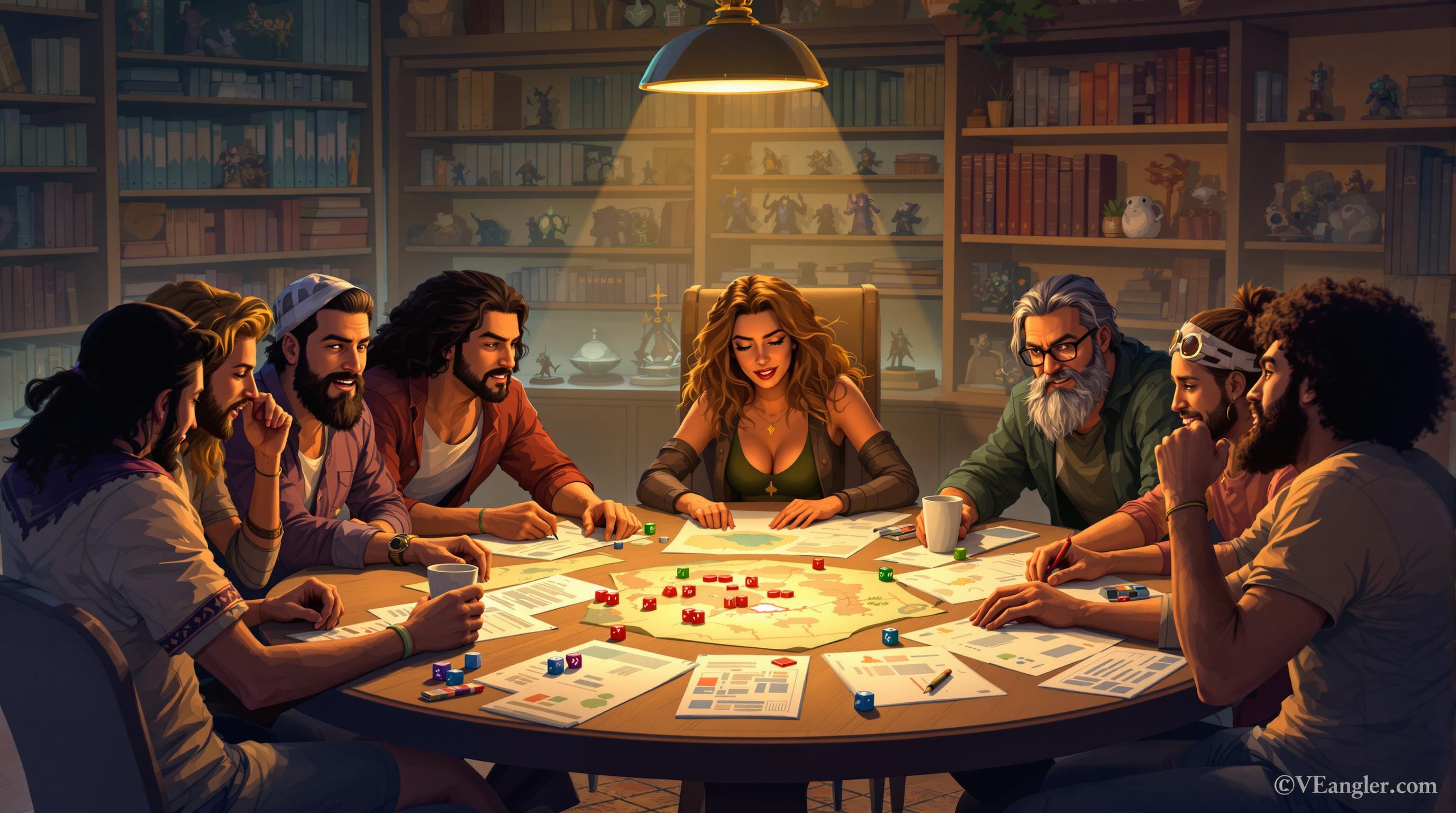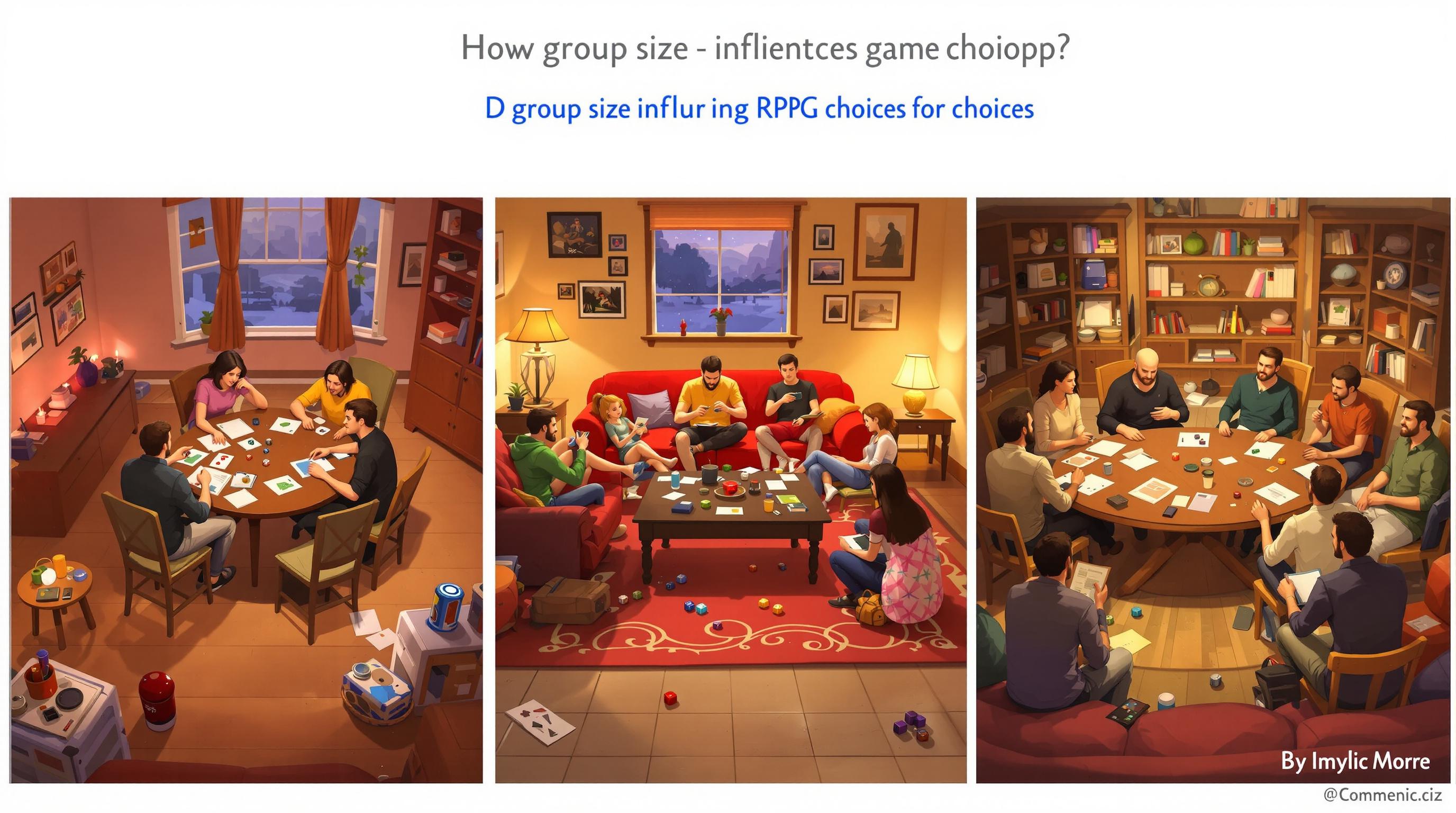Crafting systems in tabletop RPGs (TTRPGs) can make gameplay more engaging by letting players create items, manage resources, and enhance character progression. But balancing these systems is key to avoiding frustration or imbalance. Here's how to do it:
- Set Clear Goals: Decide how crafting fits into your game. Is it central (e.g., survival games) or secondary (e.g., story-driven games)?
- Align with Core Mechanics: Connect crafting to combat, exploration, social interactions, or character growth for seamless integration.
- Balance Resources: Use scarcity tiers (common to legendary) and control supply to keep crafting challenging but fair.
- Adjust Difficulty Over Time: Scale crafting complexity as players level up to maintain interest and reward effort.
- Offer Meaningful Rewards: Ensure crafted items are useful, customizable, and balanced compared to other rewards.
A good crafting system encourages teamwork, ties into the game’s narrative, and provides players with choices that feel rewarding and impactful.
| Crafting Focus | Key Features | Player Impact |
|---|---|---|
| Resource Management | Scarcity, location-based materials | Encourages exploration and planning |
| Difficulty Scaling | Progression-based challenges | Keeps crafting engaging over time |
| Team Collaboration | Shared roles (gatherer, assembler, enchanter) | Strengthens group dynamics |
| Reward Design | Customizable, upgradeable, or story-driven | Adds depth without overpowering gear |
Crafting should enhance gameplay without overshadowing other elements, offering players meaningful choices and a sense of accomplishment.
Cypher System RPG - My Crafting System

Define Your Game's Crafting Goals
Set clear goals for your crafting system to improve gameplay without adding unnecessary distractions.
Set Clear Crafting Objectives
Decide whether crafting plays a central role or serves as a secondary feature. For instance, in survival games, crafting might be essential for building tools or shelter. In contrast, story-driven games might use it as an optional way to develop characters.
Here are a few things to think about:
- How crafting affects the in-game economy
- The time and resources it requires
- How crafting progresses as the game advances
Once you've outlined these goals, tie them into your game's primary mechanics.
Connect Crafting with Game Mechanics
A good crafting system should work seamlessly with your game's existing features.
| Game Element | Crafting Example | Gameplay Effect |
|---|---|---|
| Combat | Crafting weapons or upgrades | Adds tactical depth |
| Exploration | Missions to gather resources | Encourages players to explore more |
| Social | Trading crafted items | Strengthens player interactions |
| Character Growth | Developing crafting skills | Offers an alternate growth path |
Key points to keep in mind:
- Make sure crafting fits naturally with other mechanics
- Clearly define how resources turn into crafted items
- Balance crafting rewards with other game features
- Include group crafting tasks to promote teamwork
The goal is to make crafting an engaging part of your game without letting it overshadow other features. Strike a balance between keeping it approachable and tying it meaningfully to the core gameplay.
Manage Resource Distribution
Balancing resources effectively keeps your game engaging and fair.
Set Resource Scarcity Levels
Different materials should vary in how easy they are to find, based on their power and purpose. Here's a simple breakdown:
| Resource Tier | Availability | How to Obtain |
|---|---|---|
| Common | Easy to find | Basic gathering, shops |
| Uncommon | Harder to find | Special merchants, mini-quests |
| Rare | Very limited | Boss battles, major quest rewards |
| Legendary | Extremely limited | Epic challenges, unique events |
Make resource gathering more dynamic by tying it to specific activities:
- Add location-specific resources to encourage exploration.
- Offer seasonal or time-limited resources for variety.
- Reward rare resources for achievements or key story moments.
- Use resource decay mechanics to avoid excessive stockpiling.
Control Resource Supply
To avoid flooding the game with materials and maintain item value, manage the flow of resources carefully:
- Limit how much players can carry at once.
- Allow surplus materials to be converted into other forms.
- Introduce maintenance costs or other "resource sinks."
- Use consumables that are depleted during crafting to balance supply.
sbb-itb-b8b00a5
Set Appropriate Challenge Levels
Create a balanced crafting system that feels fair and rewarding for players.
Match Difficulty to Player Progress
As characters grow, crafting challenges should become more complex to keep players engaged. Here's an example of how crafting difficulty can align with character progression:
| Character Level | Crafting Complexity | Success Rate | Required Resources |
|---|---|---|---|
| Beginner (1–5) | Basic recipes | 80–90% | 2–3 common materials |
| Intermediate (6–10) | Advanced combinations | 60–75% | 3–4 mixed materials |
| Expert (11–15) | Complex formulas | 40–55% | 4–5 rare materials |
| Master (16+) | Legendary crafting | 25–35% | 5+ legendary materials |
Adding new recipe tiers as players advance helps maintain interest. Ensure these challenges remain easy to understand with straightforward mechanics.
Keep Systems Simple
A simple crafting system is key to keeping players engaged. Focus on these core elements:
-
Base Mechanics
Start with clear, straightforward rules and gradually introduce more advanced techniques. -
Skill Development
Allow players to naturally uncover deeper system complexities as they progress. -
Quality Control
Implement a clear quality rating system to reward effort and resource investment.
Here's an example of a quality system:
| Quality Level | Requirements | Benefits |
|---|---|---|
| Standard | Basic materials with a normal roll | Base item stats |
| Superior | Quality materials with a good roll | +10% effectiveness |
| Masterwork | Rare materials with an excellent roll | +25% effectiveness |
| Legendary | Perfect materials with a critical roll | +50% effectiveness |
This structure provides players with clear goals while rewarding them for their progress and resource management.
Create Worthwhile Results
Crafted items should provide clear benefits and keep players engaged. Here's how to design rewards that add value to gameplay without upsetting the balance.
Design Crafted Items That Stand Out
| Item Type | Unique Feature | Game Impact |
|---|---|---|
| Customizable Equipment | Players select bonus attributes | Encourages personalized builds |
| Story-Driven Items | Tied to narrative or campaign | Boosts roleplaying immersion |
| Consumables | One-time-use effects | Promotes strategic decisions |
| Upgradeable Gear | Evolves with the character | Offers long-term payoff |
| Signature Items | Unique visuals or mechanics | Strengthens character identity |
Key considerations for crafted items:
- Gameplay Benefits: Offer clear advantages but avoid overshadowing other gear.
- Story Integration: Tie items to the game’s lore or narrative for added depth.
- Distinct Appearance: Make items visually striking or give them unique effects.
- Progression-Friendly: Allow items to grow with the player’s character.
Make sure crafted items are balanced against other rewards to maintain fairness and variety in gameplay.
Compare Crafted Items to Other Rewards
Crafted items should complement, not compete with, other reward systems. Here's a comparison:
| Reward Source | Expected Value | Crafting Comparison |
|---|---|---|
| Combat Loot | Random, instant gratification | Predictable but requires effort |
| Quest Rewards | Guaranteed, story-driven | Customizable, resource-based |
| Purchased Items | Reliable but costly | More affordable but time-consuming |
| Treasure Finds | Rare and powerful | Consistently player-controlled |
Key balancing factors:
- Resource Cost: Crafting should require meaningful investment to feel rewarding.
- Time Commitment: The effort should match the power or utility of the item.
- Exclusivity: Crafted items should offer unique effects to maintain their appeal.
- Power Balance: Ensure crafted items stay useful without becoming overpowered or essential.
This balance ensures that crafting remains an engaging and rewarding part of the game.
Build Team-Based Systems
Team-based crafting enhances gameplay by encouraging collaboration and strengthening group dynamics. By expanding on individual crafting mechanics, shared tasks can make the experience more engaging for everyone.
Create Crafting Specialties
Crafting as a team works best when players have complementary roles. Here are some key specialties to consider:
| Specialty | Primary Role | Team Contribution |
|---|---|---|
| Resource Gatherer | Collects raw materials | Supplies essential components to the team |
| Component Crafter | Creates basic parts | Provides materials needed for advanced items |
| Master Assembler | Combines components | Completes complex crafting projects |
| Quality Inspector | Enhances success rates | Minimizes waste and improves final results |
| Enchanter/Modifier | Adds special properties | Customizes items to suit the group's needs |
Each role brings distinct skills. For example, Resource Gatherers might locate high-grade materials, while Component Crafters create specialized parts that others rely on.
Design Team Crafting Tasks
Collaborative crafting tasks can be structured as follows:
| Task Type | Player Count | Completion Time | Benefit |
|---|---|---|---|
| Basic Item Assembly | 2-3 players | 1 session | +15% item quality |
| Complex Equipment | 3-4 players | 2-3 sessions | +25% effectiveness |
| Legendary Artifacts | Entire party | 4-5 sessions | Unique team bonuses |
| Group Rituals | 2+ players | Single sitting | Faster crafting process |
To make team crafting tasks enjoyable and rewarding, focus on these elements:
- Include steps that require coordinated actions from multiple players.
- Use shared resource pools that everyone can contribute to and manage.
- Encourage the exchange of recipes and techniques within the group.
- Offer extra rewards when multiple players collaborate on a single project.
The goal is to create a system where working together feels both natural and rewarding. Cooperative efforts should lead to better results while still allowing each player to shine individually.
Conclusion
A well-designed crafting system enhances both progression and player engagement. The key is aligning it with your game's genre and overall style. For example, in a fantasy setting, crafting might revolve around creating magical items and enchantments. In contrast, a sci-fi game could focus on equipment upgrades and technological modifications.
Resource management and challenge scaling should also reflect the game's theme. Post-apocalyptic games might use scarcity to make crafting a survival tool, while high-fantasy games could feature abundant materials with rare components for creating powerful artifacts. These adjustments ensure the crafting system fits seamlessly into your game's mechanics and narrative.
Another important factor: complexity should match the game's design. Rules-light RPGs benefit from simple, intuitive crafting systems, while tactical games can support more detailed and layered mechanics - just be careful not to overwhelm players.
Find More Games
Looking for inspiration? The TTRPG Games Directory offers a wide range of games across different genres. Whether you're into fantasy blacksmithing, sci-fi engineering, or survival crafting, you’ll find detailed insights into crafting systems for each game at TTRPG Games Directory.
This resource makes it easy to discover games that match your preferred crafting style, from straightforward resource gathering to intricate team-based systems.


